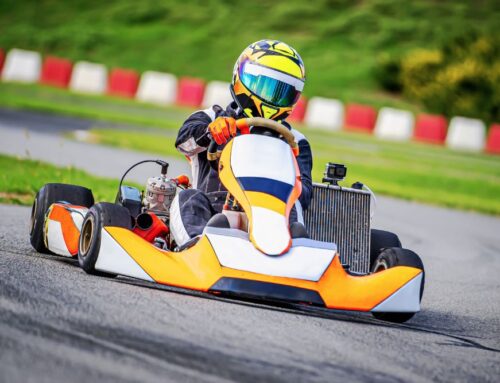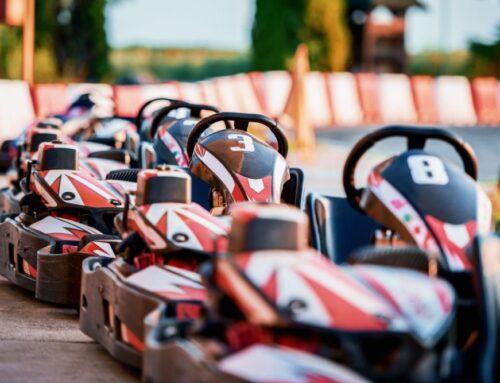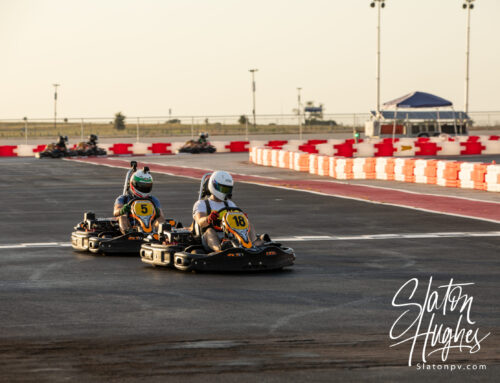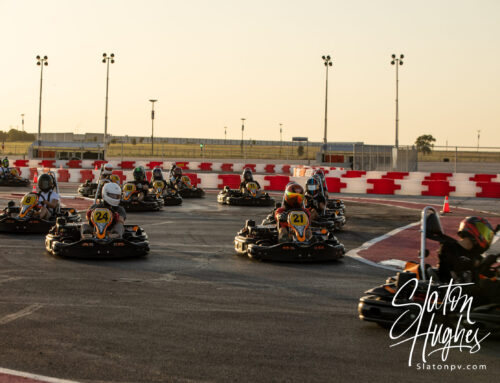Rain can add an extra layer of challenge to kart racing. The reduced grip and visibility make it crucial for drivers to adapt their techniques to stay on track and be competitive. At Lone Star Kartpark, we believe that with the right approach, wet weather can be an opportunity to improve your kart control and racing skills. In this blog, we will discuss three essential tips for kart racing in the wet: finding the wet weather racing line, braking techniques, and throttle modulation.
Finding the Wet Weather Racing Line
The racing line in wet weather is different from the dry line. The traditional dry line has a layer of rubber from tires that, when mixed with water, becomes very slippery. This shiny, rubbered-up line should be avoided in the wet. Instead, drivers should look for a more abrasive surface, which is often found on the outside of the circuit or inside of the rubber line. This part of the track provides more grip in the wet conditions.
Initially, it’s recommended to drive towards the outside of the racetrack before going inside of the racing line. As you become more familiarized with the wet weather conditions and gain confidence, you can start to alternate your lines to cross over the traditional dry racing line.
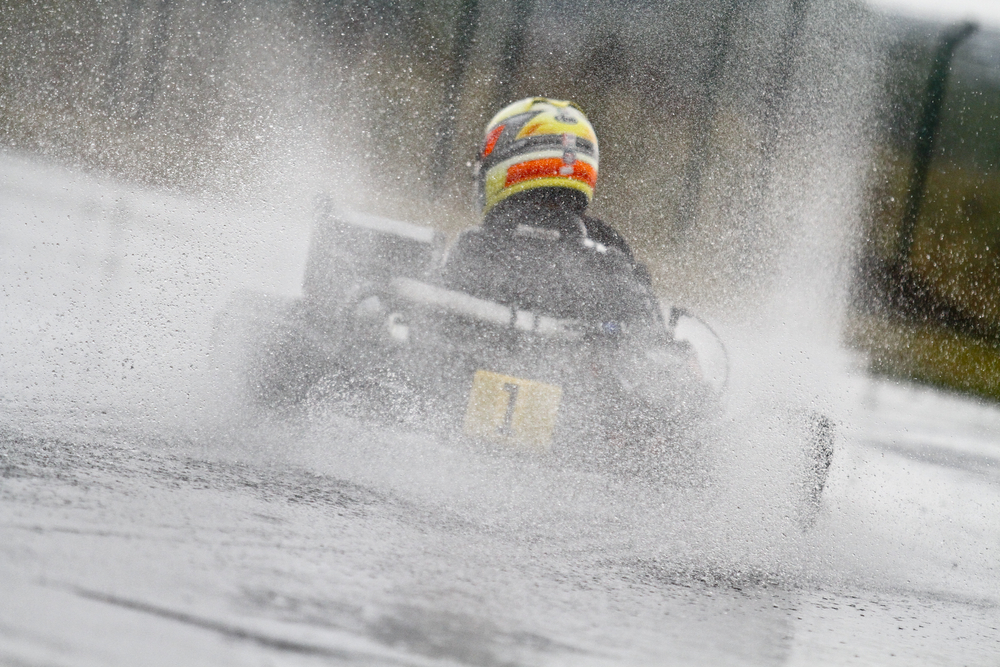
Braking Techniques in Wet Weather
Braking in the wet requires a gentle touch. Locking up the brakes can lead to a quick spin, as there is limited grip on a wet surface. If the brakes do start to lock, it’s important to release the brake pressure as early as possible. Although this might result in going too fast into a corner, using the steering wheel to slow the kart or steer around the corner is better than locking up the brakes and spinning off.
As you gain more confidence in the wet, you can start to learn to trail brake, which involves locking up the brakes and then releasing the pressure into the corner. However, mastering this technique requires a lot of practice and making mistakes to learn from.
Throttle Modulation
In wet conditions, the track surface is slippery, and there is limited grip. Hitting the accelerator aggressively can lead to wheel spin and increase the chances of spinning. It’s essential to modulate the acceleration, meaning you should accelerate quite aggressively initially, then gently get off the accelerator as soon as it starts to wheel spin, and then start to reapply the throttle.
A little bit of wheel spin is fine, but excessive wheel spin will not make you go faster. It’s essential to learn how to modulate the acceleration properly. This is particularly important in faster categories, such as shifter karts, X30, or Rotax, compared to mini or micro classes.
Closed for Rain, Open While Still Wet
At Lone Star Kartpark we close down for bad weather and storms, but when it’s just wet, you can still come in and have a blast racing. However, it’s important to note that racing in the wet can be challenging. But, with the right techniques, it can be a rewarding experience that improves your kart control, throttle modulation, and braking techniques. Practice is key to mastering wet weather racing. If you can control the go-kart in the wet, you will have no issues in the dry.
Remember, the key to success in wet weather kart racing is to find the more abrasive surface on the track, use gentle braking techniques, and modulate the throttle to minimize wheel spin. Happy racing, and we hope to see you on the track at Lone Star Kartpark soon!

